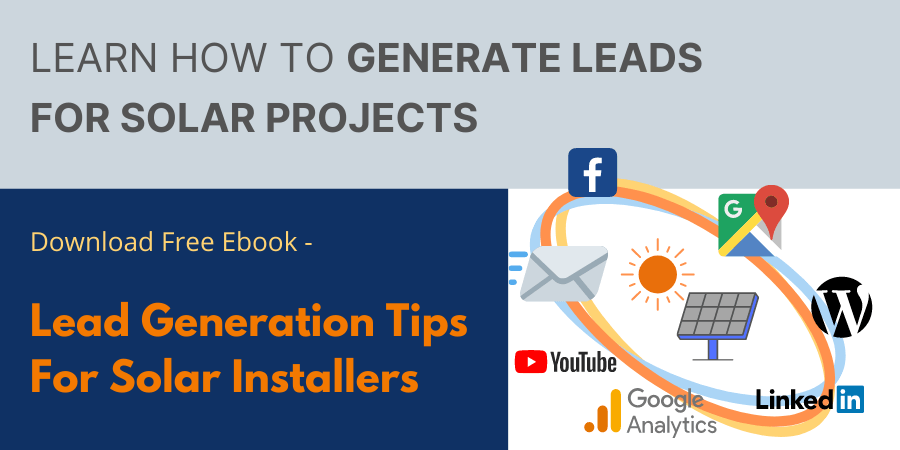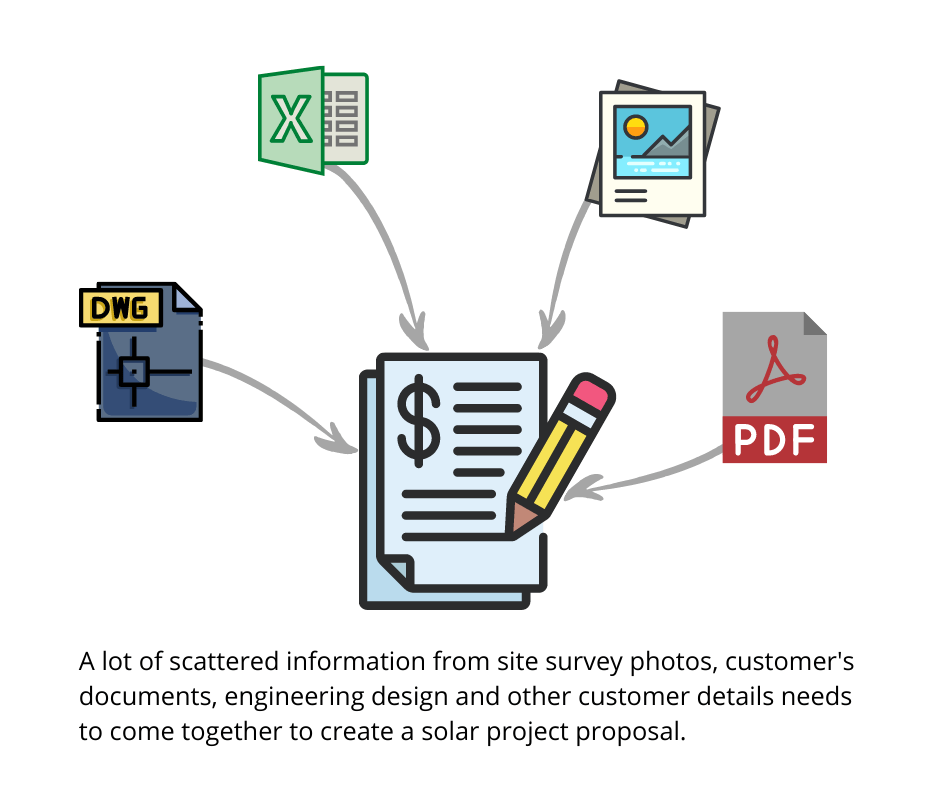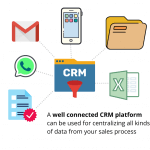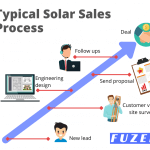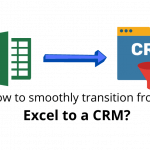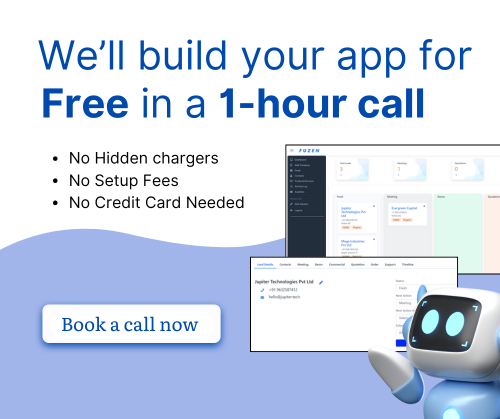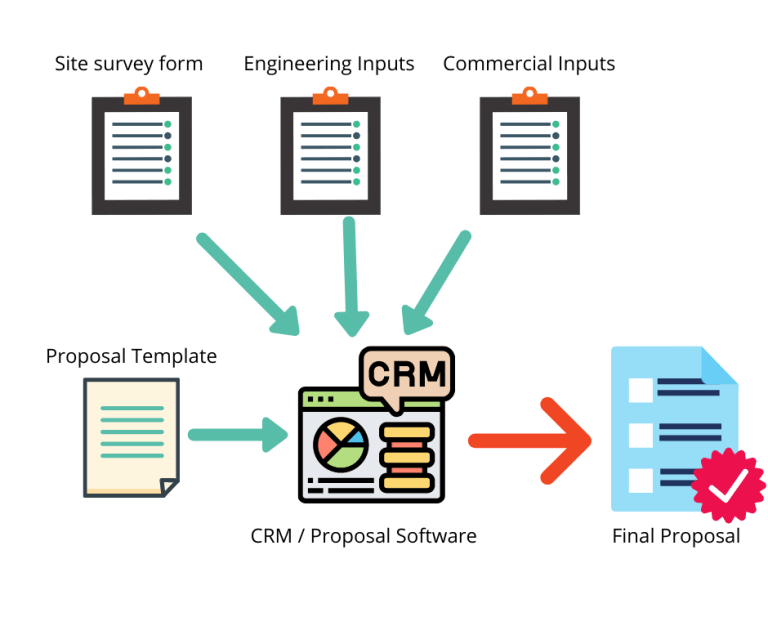When you start a new solar installation business there are bound to be a few challenges with the sales process. Your sales process may not be fully streamlined in the beginning.
An ineffective sales process will allow your competition to steal away your clients, draining away your sales resources and potential revenue!
So let's look at some common challenges in solar sales and how we can address them by defining a clear and efficient sales process that can be effectively configured in a solar crm software.
Challenges in lead capturing
Your solar sales process always starts with capturing a lead. Many people visit your website daily. Few of them may be interested in your product.
But if they do not find a simple way to submit their information or to contact you they would leave your website. Therefore your website must be responsive and interactive.
To make your website more responsive you can use a chatbot to interact with your visitors. t greatly helps you in capturing qualified solar leads. There must be a simple form where your lead can submit the required information for you to contact them. You can also install various tools like calculators to help your visitors.
For example, before any homeowner decides to install a solar PV system, they are going to need answers to various questions. Then depending on how much the system is going to cost and how much they are going to save on the utility bills, they will decide the size (in kW) of solar installation.
So you would need to spend some time consulting every prospective customer. That can put a strain on your time bandwidth. You can just automate the consultation part by giving your prospect an interactive solar calculator to play with.
Similarly, people may even come across your social media pages. We know that you always have a tight schedule. For this reason, you can use social media automation software. This will keep your profiles updated and engaged.
After collecting the lead information from both online and offline, it must be properly stored. Many businesses collect such information on paper forms, WhatsApp, or on random online documents.
If you don't store this information properly it can get lost or misplaced. This may also result in you losing your potential client.
Therefore you need to store such information systematically. It is also important that your data should always have a backup.
Challenges in lead qualification
As a solar entrepreneur, your time is your most valuable asset. As the competition is increasing it has become very important for you to figure out which leads to focus on and which leads to let go. Wasting your time on leads that won't qualify will reduce your profitability.
That is why lead qualification is so important. You have to qualify only those leads that have the highest probability of getting converted in the next 1-2 months. If you don't have a proper lead qualification system then you will be losing your time and money.
Also if your leads qualification is a slow process then the potential leads may start looking for other alternatives. Therefore you should qualify your leads and contact them as fast as possible.
So what do you do with other unqualified leads?
Many solar businesses tend to ignore all the other leads that do not qualify right now. This can be a huge mistake. All these leads can become your future clients. If you completely ignore them right now then they may ignore you later. So for this reason you have to nurture all the other unqualified leads using various marketing techniques.
Challenges in site survey
Another major challenges in solar sales is the site survey. You have to send a site engineer to meet the client after you have qualified and contacted the lead. The site engineer will evaluate many different things at the clients site. This includes the area available for installation, condition of the roof, etc.
The site engineer has to collect a lot of information. Many times these site engineers do not have a systematic way to collect and store the data. They may take pictures of the site and collect the information like dimensions, area, etc. on their personal mobile phone. Over a period of time this can result in a mess.
Your site engineer may leave job and all this important information will be gone along with him. Likewise all the data will be lost if the mobile phone of the engineer is lost or gets damaged.
Therefore it's always better to have a single organized platform to collect and store all the client's data. A single platform will help you find any required information at any given point in time. This will also reduce your fear of losing the data.
Challenges in design engineering
The data collected by the site team is then transferred to the design team. Your teams might be using WhatsApp, email, etc. to share such data.
Design engineers will then use this data in a solar design software to forecast the PV power generation potential on selected site and correspondingly decide the specs of panels and inverters to be installed there.
This can create a chaotic situation if the data of each client is not shared separately and on a common platform. Your design team may get confused and mistakenly use the wrong information in creating a design.
The design engineer will also find it difficult to trace back any information of any particular client if required. There is also a risk of losing your data.
Therefore a centralized platform should always be used for communication between all your design engineers and remaining teams.
Challenges in proposal
One of the major solar sales challenges is preparing a proposal after the design is ready. Manually preparing each proposal will consume a lot of your time. There is also a chance of clerical errors.
Your proposal may look boring if it’s just a plain word file with no graphics and diagrams. All the information like ROI, , benefits and other complex things can be properly explained using graphics and analytical graphs Therefore your client may choose your competition over you if they send a colourful and graphical proposal.
Also, you should send the proposal as soon as the design is ready. If you make your client wait for the proposal he may start looking for alternatives.
Therefore it is always helpful to have an automated system to prepare and send the proposal.
Another important challenge could be with the proposal format that you are using. Solar installation market is fiercely competitive and most people will get quotations for 2-3 solar installers before they buy from someone.
An impressive looking proposal document can help you stand out from the competition. Use this proposal as an opportunity to educate your customers better than your competitors are doing.
Use a clear and visually pleasing solar proposal template that is also easy to understand. If you can truly enlighten your customers, they will trust you more for it.
Challenges in follow up and closure
There can be a mismatch in expectations and offer. Due to this misunderstanding, the client may not contact you and may decide to go with other alternatives.
So it is important for you to have regular follow-ups with your client.
It can happen that due to a busy schedule, you may forget to have a follow-up on time. To help you with that you should have an automated follow-up reminder. This will help you to negotiate and close the deal as fast as possible.
Other solar sales challenges
Your business could be getting a lot of leads and have employed various site engineers to handle them. But you have to assign each lead to the engineer personally.
If you forget to assign any lead then that lead will remain unaddressed. Also assigning and delegating tasks can consume a lot of your time.
Therefore it's better to have an automated system that will automatically assign the task to the engineer when the lead is generated.
It is also necessary that your engineer have a proper knowledge of the task assigned. It once happened that an engineer was sent to a site which required on-grid solar panels but the engineer was only trained for the off-grid solar panel.
Because of this he collected the information which is required for the off-grid system. And all his efforts and time were wasted.
This is why your solar crm software should always have a pre designed checklist which will help the engineer in collecting the right data.

